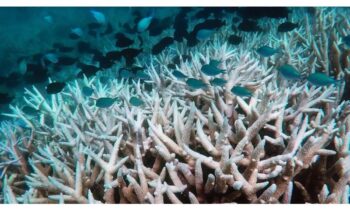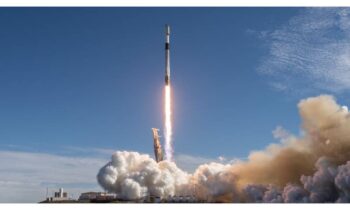
By the end of the decade, SpaceX will build an upgraded Dragon spaceship for NASA to manage the station’s de-orbit.
New information regarding the United States Deorbit Vehicle (USDV) spacecraft was revealed by NASA and SpaceX representatives at a conference on July 17. NASA chose SpaceX to build the USDV spacecraft on June 26 under a contract that could total up to $843 million. The spacecraft’s specific capabilities and design were not disclosed by the agency or the firm at the time of the announcement.
The USDV will include a larger, modified trunk portion with more Draco thrusters, modeled like SpaceX’s Dragon spacecraft. According to Sarah Walker, director of Dragon mission management at SpaceX, the spaceship will contain 46 Draco thrusters: 16 for attitude control and 30 for the maneuvers required to reduce the station’s orbit when its life is coming to an end.
She said that the “enhanced” trunk section, which will house power generation, propellant tanks, engines, and other components, is twice as long as the standard one. It will generate and store three to four times the power of the existing Dragon spacecraft, but it will store six times as much propellant. “It’s almost a spacecraft in and of itself,” she remarked.
Shortly after the last crew of the ISS arrives, NASA, which will own and run the USDV once SpaceX produces it, will launch the vehicle to the station. The ISS controllers will let the station’s orbit naturally decline after the USDV arrives and is inspected. The last crew will depart when the station’s altitude, which is currently roughly 400 kilometers, hits 330 kilometers.
Before NASA uses the USDV for a final controlled deorbit of the station, aimed at an open patch of ocean in a narrow corridor around 2,000 kilometers long, the station’s orbit will continue to deteriorate for another six months. NASA anticipates parts of the station, which range in size from a microwave oven to a sedan, to survive reentry and splash down in that corridor, according to Dana Weigel, NASA’s program manager for the International Space Station.
The estimated mass of the USDV is above 30,000 kg, of which 16,000 kg are for propulsion. Weigel stated, “We’ve got to be on a heavier class of rocket,” as opposed to the Falcon 9 currently in use for Dragon missions. At least three years prior to flight, NASA will acquire the launch vehicle independently.
Walker stated, “If the opportunity arises for SpaceX to launch the USDV, we’d happily support it,”
Northrop Grumman was the only other company to submit a bid for the USDV. NASA’s source selection statement claims that Northrop provided a vehicle that was “significantly higher” than SpaceX and had worse ratings for mission fit and historical performance.
“I was really happy that we got proposals from the companies that we did,” according to NASA Associate Administrator for Space Operations Ken Bowersox. “I would have expected a few more, honestly, but I was very happy to get the ones that we got.”
Weigel went on to say that due to the high reliability required to safely demolish the station, NASA placed a strong emphasis on flying heritage in their call for proposals for the USDV. “It doesn’t completely surprise me that our current transportation providers, who are already flying and compatible with things like docking to ISS,” bid on the vehicle, she said. “I thought we would get a couple others, but definitely no surprise with the two we got.”
Update on the oddity of Falcon 9
The briefing was held over a week after a Falcon 9 experienced an anomaly while launching a series of Starlink satellites. The satellites were launched into very low perigee orbits due to a liquid oxygen leak in the rocket’s upper stage, which prevented the engine from completing a second fire.
The Falcon 9 was grounded due to that mishap, but Weigel stated that NASA is still proceeding with its plans to launch a Cygnus cargo spacecraft on one Falcon 9 as early as August and the Crew-9 mission on another Falcon 9 no earlier than mid-August.
In collaboration with the Federal Aviation Administration, SpaceX is looking into the anomaly; nevertheless, before SpaceX can start launching again, the FAA must confirm that the vehicle poses no dangers to public safety. Weigel stated, “We have our own process outside of what the FAA does,” adding that NASA is a part of the current inquiry.
Walker stated, “With the FAA and all of our customers, we’re maintaining a close partnership, and it’s going really well.” “The team has made tremendous progress just in these first few days.”
According to her, the corporation is working to finish the research to see whether there will be any effects on the future ISS and other launches’ schedules. “This is our top company priority right now,” she declared. “As for the Dragon team, my team, we continue to progress through our nominal launch preparations for a number of upcoming launches on our manifest.”



